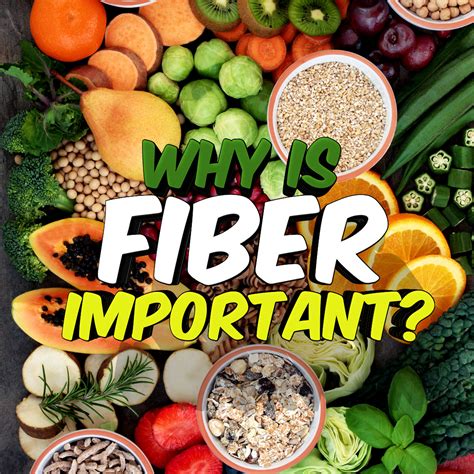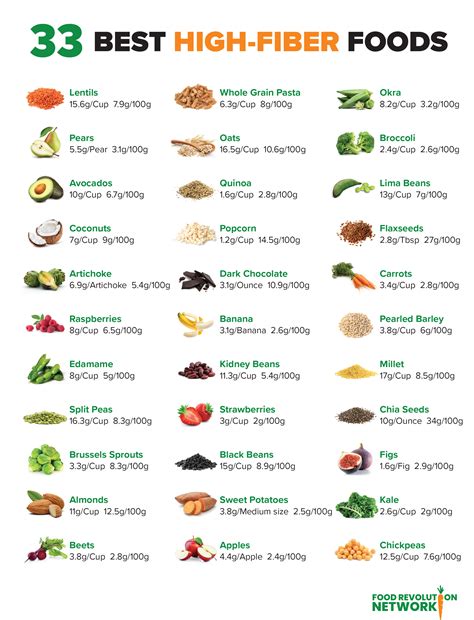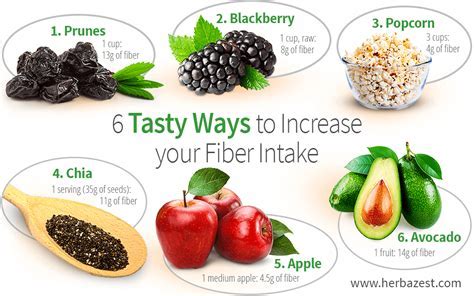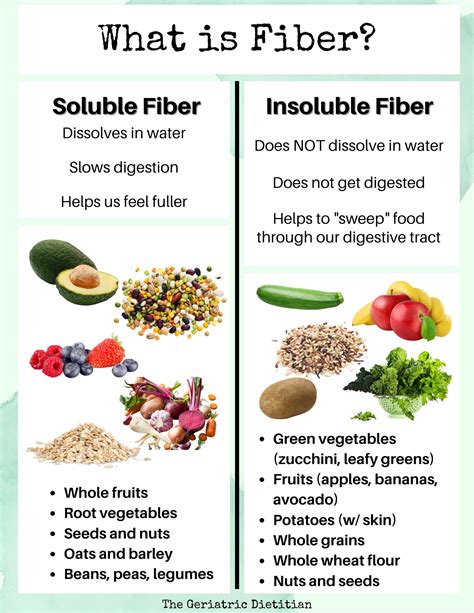Intro
Boost digestive health with 5 high fiber tips, incorporating soluble fiber, insoluble fiber, and prebiotic foods to support healthy gut bacteria and promote regular bowel movements, improving overall nutrition and well-being.
The importance of fiber in our diets cannot be overstated. A high fiber diet has been shown to have numerous health benefits, including promoting digestive health, supporting healthy blood sugar levels, and even helping with weight management. Despite these benefits, many of us are not getting enough fiber in our daily diets. The average person consumes around 15 grams of fiber per day, which is significantly less than the recommended daily intake of 25-30 grams. This is why it's essential to make a conscious effort to incorporate more fiber-rich foods into our meals.
Fiber is a type of carbohydrate that is not easily broken down by the body, and as a result, it plays a crucial role in maintaining a healthy digestive system. It helps to move food through the digestive tract, preventing constipation and reducing the risk of certain diseases, such as diverticulitis and hemorrhoids. In addition to its digestive benefits, fiber has also been shown to have a positive impact on heart health, reducing the risk of heart disease and stroke.
Incorporating more fiber into our diets can seem daunting, but it's easier than you think. By making a few simple changes to our eating habits, we can significantly increase our fiber intake and reap the many benefits that come with it. From eating more fruits and vegetables to incorporating whole grains into our meals, there are many ways to boost our fiber intake. In this article, we'll explore five high fiber tips to help you get started on your journey to a healthier, happier you.
Understanding the Importance of Fiber

Benefits of a High Fiber Diet
A high fiber diet has numerous benefits, including: * Promoting digestive health * Supporting healthy blood sugar levels * Helping with weight management * Reducing the risk of heart disease and stroke * Supporting healthy cholesterol levels * Reducing the risk of certain diseases, such as diverticulitis and hemorrhoidsIncorporating More Fiber into Your Diet

High Fiber Foods
Here are some high fiber foods to include in your diet: * Fruits: apples, bananas, berries, citrus fruits * Vegetables: broccoli, carrots, Brussels sprouts, sweet potatoes * Whole grains: brown rice, quinoa, whole wheat bread, whole grain pasta * Beans and legumes: chickpeas, black beans, lentils, kidney beans * Nuts and seeds: almonds, chia seeds, flaxseeds, pumpkin seedsTips for Increasing Fiber Intake

Overcoming Common Challenges
Here are some common challenges people face when trying to increase their fiber intake, along with some tips for overcoming them: * Digestive discomfort: Gradually increase your fiber intake to allow your digestive system to adjust. * Lack of variety: Try new high fiber foods, such as chia seeds or flaxseeds, to add variety to your diet. * Cost: Buy in bulk and plan your meals in advance to save money on high fiber foods.Maintaining a High Fiber Diet

Common Mistakes to Avoid
Here are some common mistakes to avoid when trying to maintain a high fiber diet: * Not drinking enough water: Fiber can be dehydrating, so it's essential to drink plenty of water throughout the day. * Not increasing fiber intake gradually: A sudden increase in fiber can cause digestive discomfort, so it's essential to increase your intake gradually. * Not getting enough variety: Eating the same high fiber foods every day can get boring, so it's essential to try new foods and vary your diet.Conclusion and Next Steps

Now that you've learned about the importance of fiber and how to incorporate more of it into your diet, it's time to take action. Start by making a few simple changes to your eating habits, such as adding more fruits and vegetables to your meals or snacking on nuts and seeds. As you become more comfortable with a high fiber diet, you can start to make more significant changes, such as incorporating whole grains into your meals or trying new high fiber foods. With time and practice, you'll be well on your way to a healthier, happier you.
What is the recommended daily intake of fiber?
+The recommended daily intake of fiber is 25-30 grams per day.
What are some high fiber foods?
+High fiber foods include fruits, vegetables, whole grains, beans, and legumes, as well as nuts and seeds.
How can I increase my fiber intake?
+You can increase your fiber intake by eating more fruits and vegetables, incorporating whole grains into your meals, and snacking on nuts and seeds.
What are some common mistakes to avoid when trying to maintain a high fiber diet?
+Common mistakes to avoid include not drinking enough water, not increasing fiber intake gradually, and not getting enough variety in your diet.
How can I overcome digestive discomfort when increasing my fiber intake?
+You can overcome digestive discomfort by gradually increasing your fiber intake, drinking plenty of water, and avoiding foods that are high in sugar and fat.
